Petua Keselamatan untuk Sambungan Pelayar
Sambungan pelayar menawarkan keselesaan tetapi juga menimbulkan risiko kepada akaun kita. Sambungan pelayar yang berniat jahat boleh mencuri maklumat peribadi dan butiran log masuk anda, berkemungkinan menyebabkan kerugian kewangan. Oleh itu, ia adalah penting untuk anda memastikan sambungan yang anda gunakan adalah selamat dan boleh dipercayai.
Kandungan (Klik untuk menavigasi)
2. Memadamkan Sambungan yang Berniat Jahat
1. Mencegah Risiko
i. Sahkan Sumber Sambungan Anda:
Pastikan anda hanya memuat turunnya dari kedai sambungan pelayar rasmi.
Elakkan memuat turun dari sumber pihak ketiga yang tidak sah. Kedai-kedai rasmi biasanya menyemak dan memeriksa keselamatan sambungan mereka, mengurangkan risiko pemalam yang berniat jahat.
ii. Kerap Semak dan Bersihkan Sambungan:
Ia merupakan amalan yang baik untuk memeriksa sambungan yang anda pasang secara berkala, dan memadamkan mana-mana yang tidak lagi anda gunakan atau kenali. Sambungan boleh menjadi lama atau tidak disokong dari semasa ke semasa, membawa kepada kelemahan keselamatan.
iii. Berhati-hati Dengan dan Hadkan Kebenaran:
Apabila memasang sambungan, baca kebenaran dan skop pemberikuasaan yang diminta dengan teliti. Elakkan memberi kebenaran yang berlebihan, terutamanya kepada sambungan yang tidak dikenali atau tidak dipercayai. Ini meminimumkan akses sambungan kepada maklumat peribadi dan data pelayar anda.
iv. Gunakan Pelayaran Peribadi atau Mod Inkognito:
Pelayaran peribadi membantu menghalang sambungan yang berniat jahat daripada menjejaki aktiviti dalam talian anda dan mengumpul maklumat peribadi. Jika anda menemui sambungan yang berniat jahat dan pelayar adalah terjejas, pertimbangkan untuk bertukar kepada pelayar lain.
2. Memadamkan Sambungan yang Berniat Jahat
Google Chrome
Langkah 1. Buka pelayar Chrome.
Langkah 2. Pergi ke halaman Sambungan: Taip chrome://extensions/ dalam bar alamat dan tekan Enter.

Langkah 3. Lihat melalui senarai anda dan cari sambungan yang berniat jahat (anda boleh merujuk kepada imej di bawah).
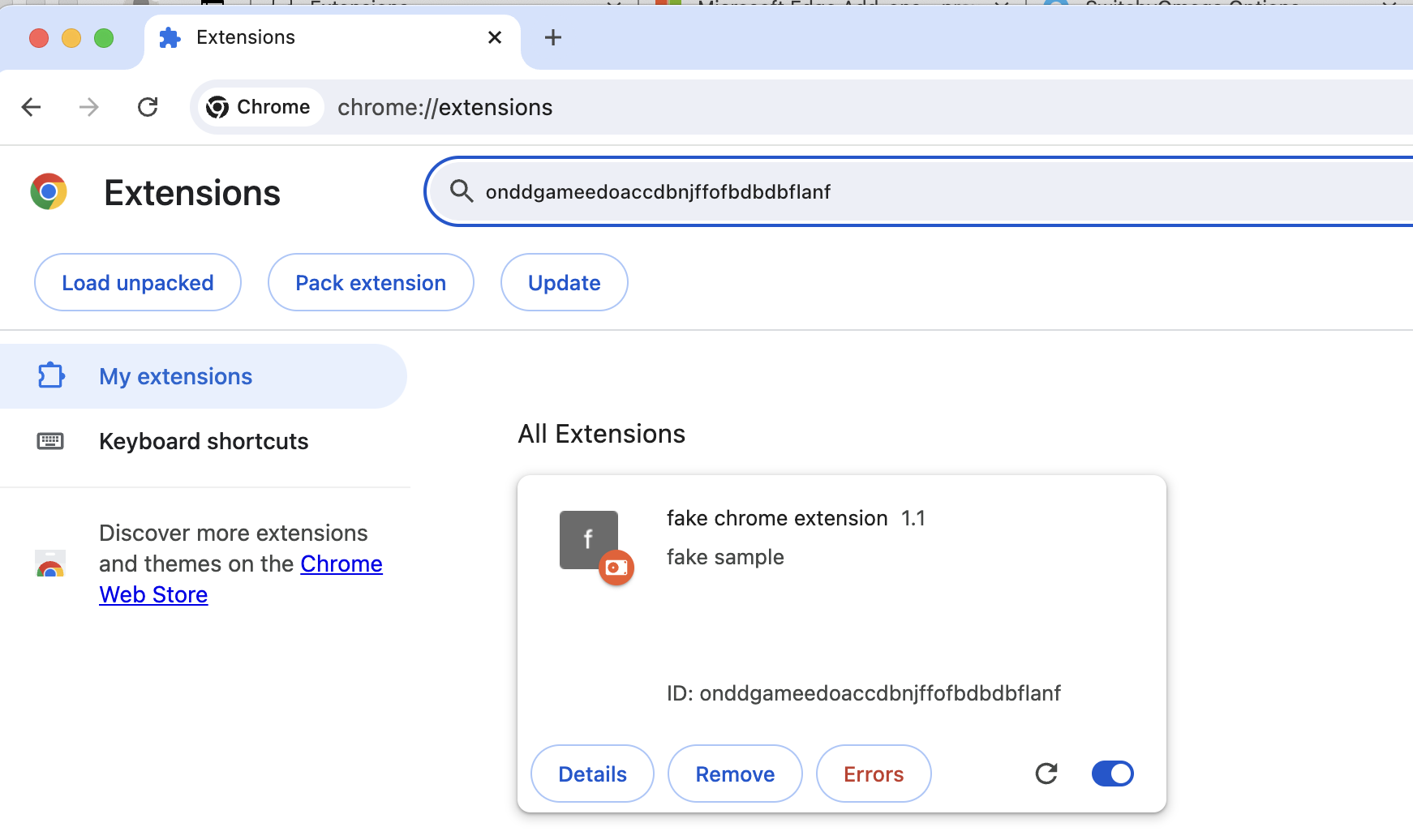
Langkah 4. Padamkan sambungan. Klik Padam di sebelah kanan sambungan, dan sahkan pemadaman dalam kotak pop timbul.
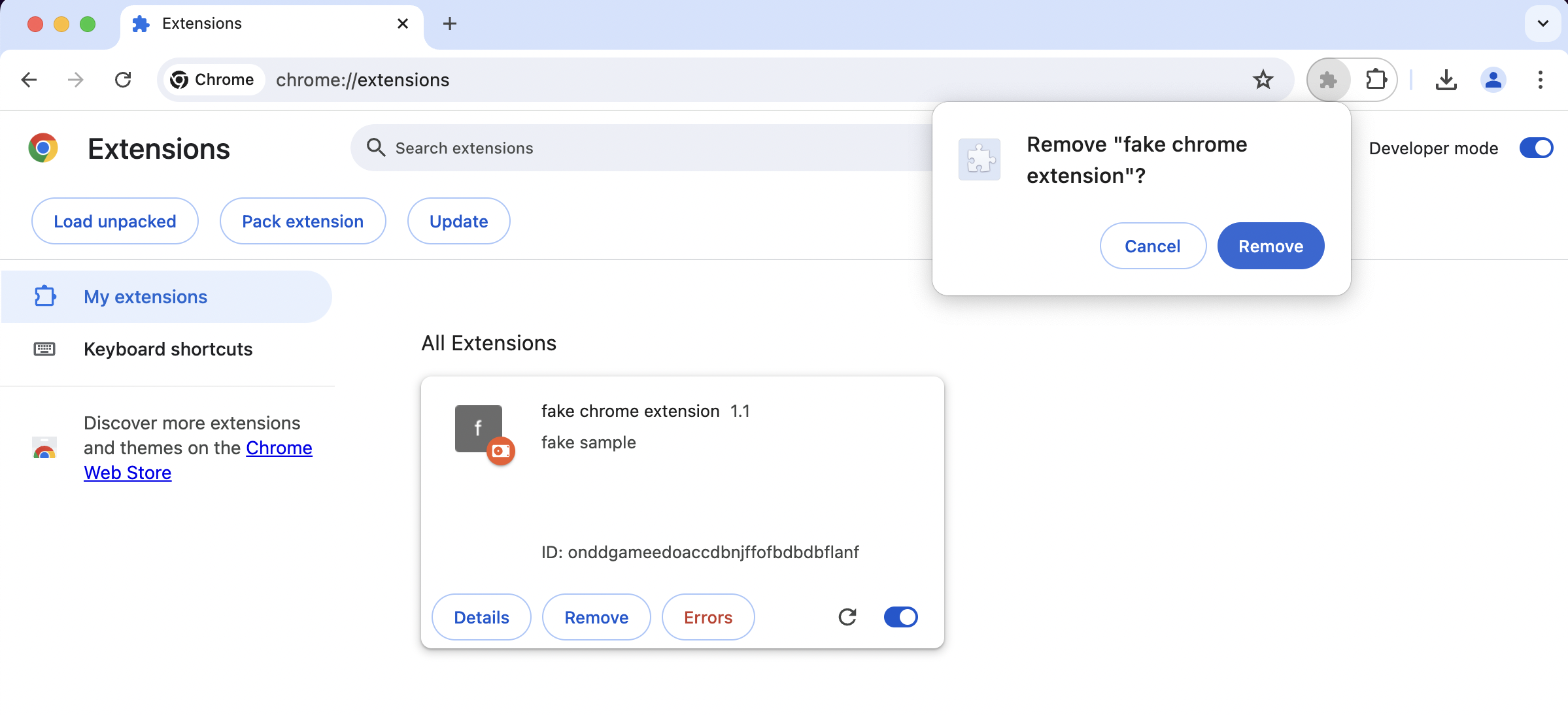
5. Mulakan semula pelayar. Tutup dan buka semula pelayar Chrome untuk memastikan sambungan telah dipadamkan dengan sepenuhnya.
Microsoft Edge
Langkah 1. Buka pelayar Microsoft Edge.
Langkah 2. Pergi ke halaman Sambungan: Taip edge://extensions/?id=[Extension ID] dalam bar alamat dan tekan Enter.
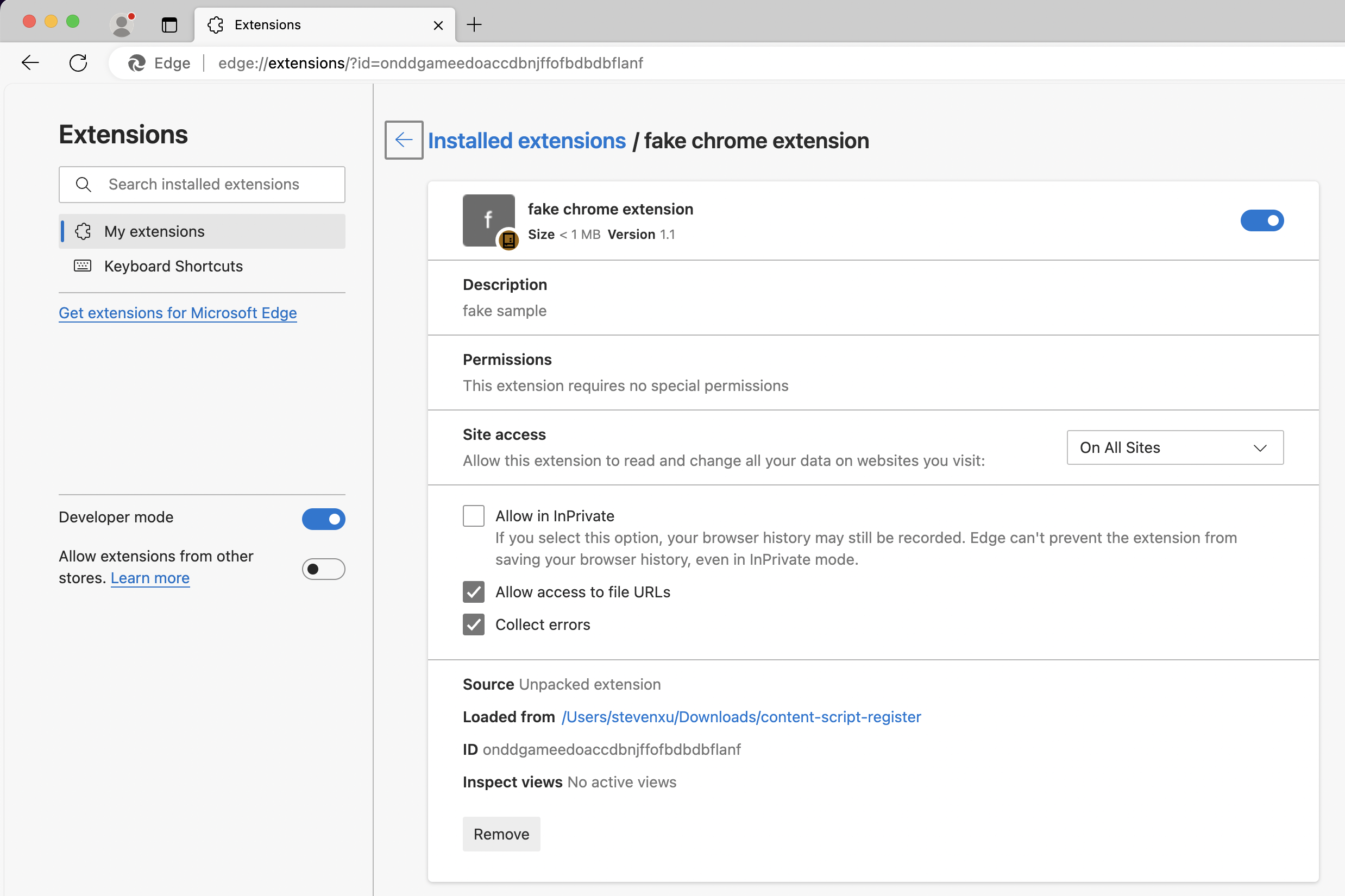
Langkah 3. Padamkan sambungan. Klik Padam di sebelah kanan sambungan, dan sahkan pemadaman dalam kotak pop timbul.
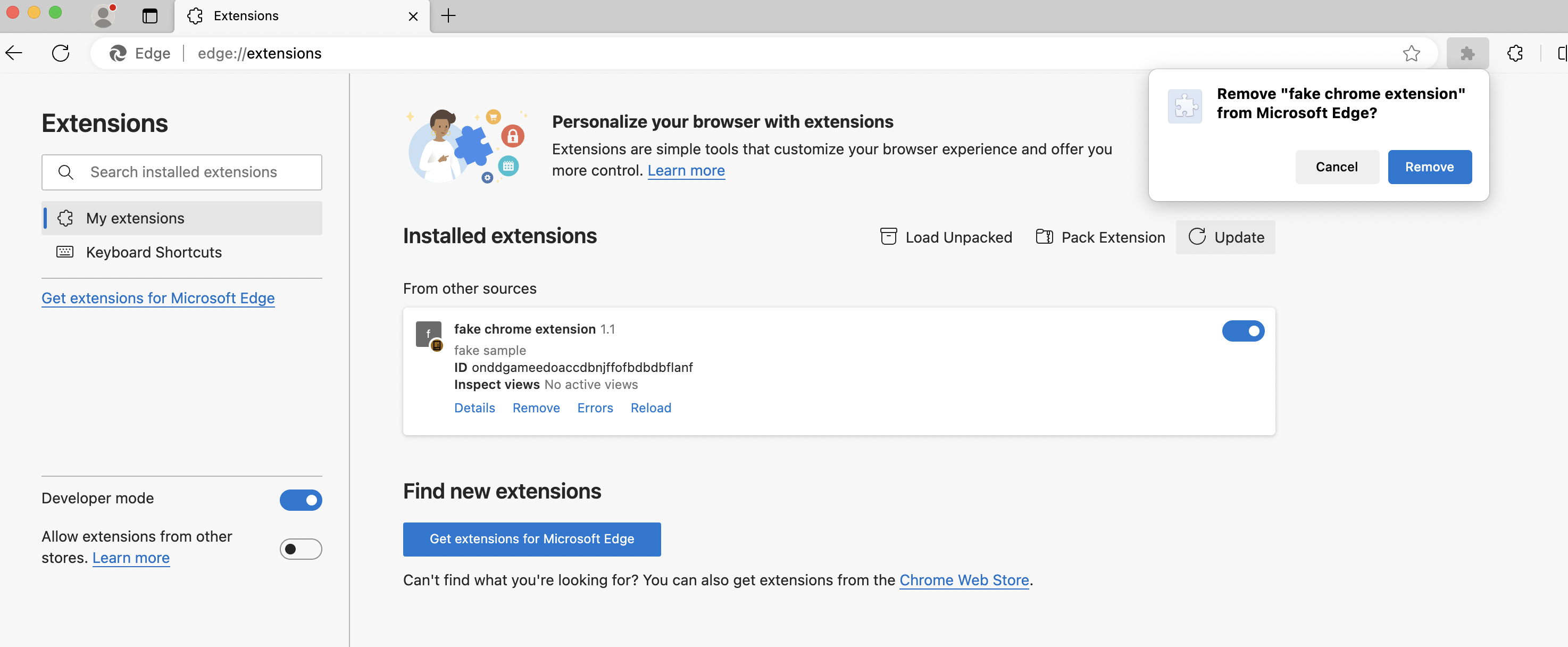
Langkah 4. Mulakan semula pelayar. Tutup dan buka semula pelayar Edge untuk memastikan sambungan telah dipadamkan dengan sepenuhnya.
Brave
Langkah 1. Buka pelayar Brave.
Langkah 2. Pergi ke halaman Sambungan: Taip brave://extensions/?id=[ExtensionID] dalam bar alamat dan tekan Enter.
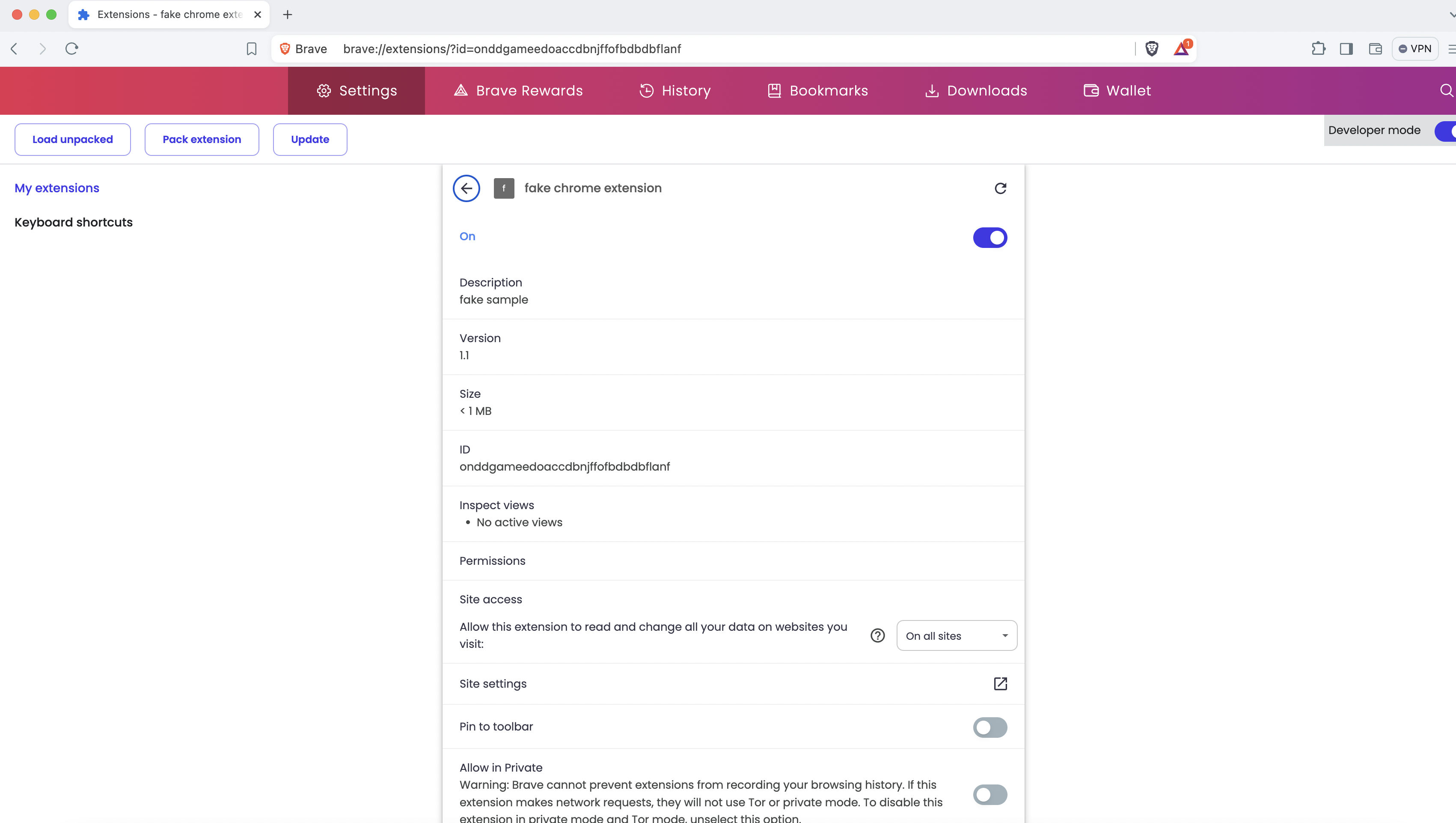
Langkah 3. Padamkan sambungan: Klik butang Padam sambungan, dan kemudian klik Padam sekali lagi dalam kotak dialog pengesahan yang muncul.
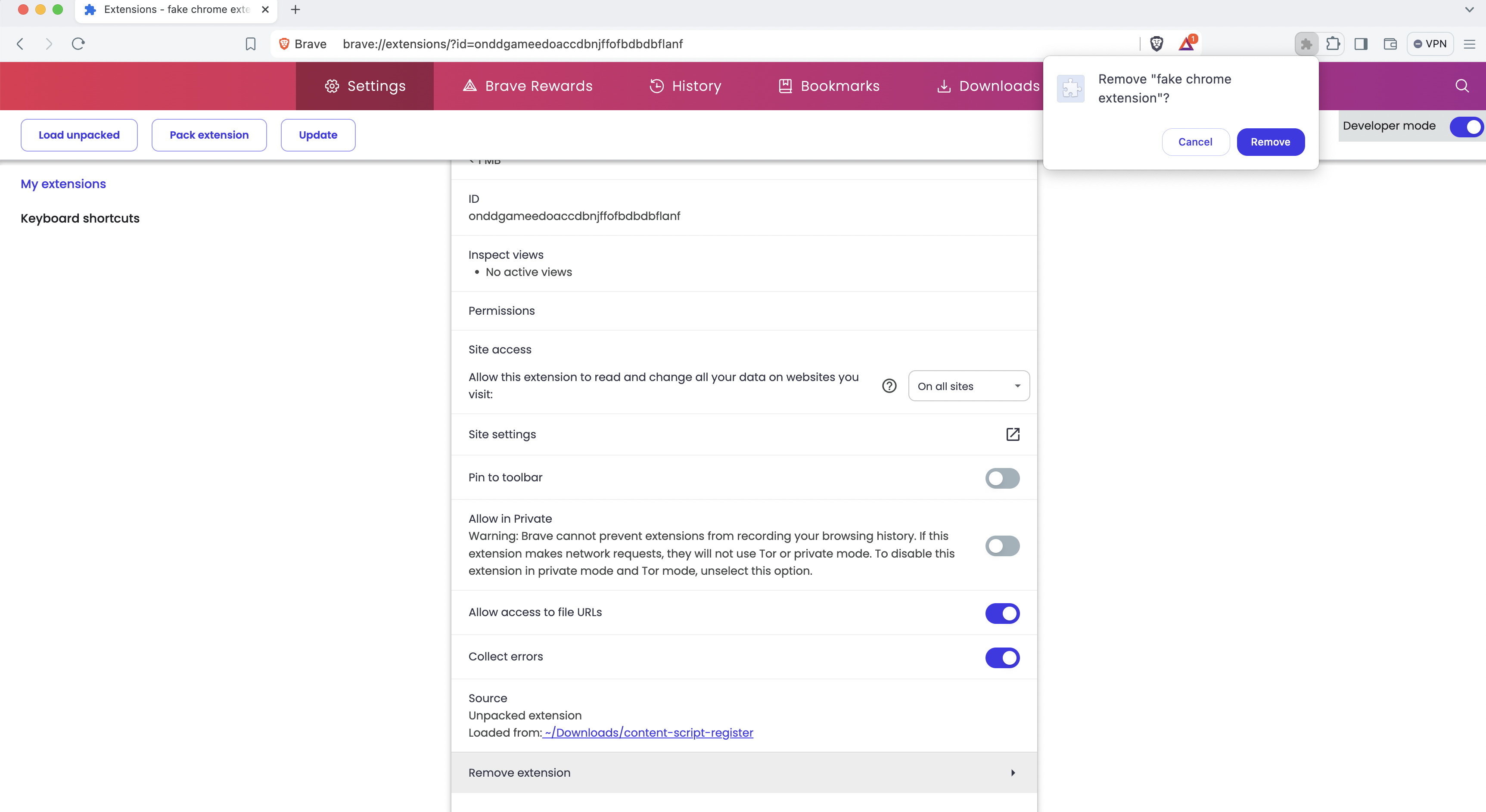
Langkah 4. Mulakan semula pelayar. Tutup dan buka semula pelayar Brave untuk memastikan sambungan telah dipadamkan dengan sepenuhnya.
3. Peringatan Lembut
i. Perkhidmatan Keselamatan Sambungan (selepas ini dirujuk sebagai “Perkhidmatan”) bertujuan untuk menyediakan maklumat keselamatan dan nasihat mengenai cara untuk meningkatkan keselamatan pelayar.
ii. Perkhidmatan menawarkan nasihat dan maklumat umum, bukan jaminan keselamatan terperinci. Pengguna harus menilai dan membuat keputusan mengenai langkah-langkah yang perlu diambil untuk melindungi sistem dan keselamatan data mereka secara sendiri.
iii. Perkhidmatan pengesanan keselamatan sambungan tidak menjamin ketepatan yang sepenuh, dan kami tidak bertanggungjawab ke atas sebarang kerugian langsung atau tidak langsung yang berpunca daripada penggunaan perkhidmatan ini.
iv. Apabila menyemak dan membersihkan sambungan pelayar, pengguna mesti sentiasa beroperasi dengan berhati-hati. Pemadaman sambungan boleh menyebabkan kehilangan data atau kefungsian terhad, dan pengguna sendiri mesti menanggung akibatnya.